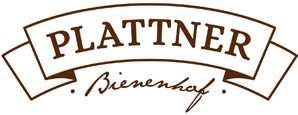The visitor's attention is immediately drawn to the 150-year-ol pear trees, but there are many other traditional plants at the Plattner Bienenhof, which serve as an important source of food for the bees.
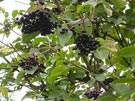 |
The elder (Sambucus nigra) For centuries the farmers have made a refreshing juice out of the white blossoms but also out of the dark reddy berries. Syrup from elder blosoms is also on sale in our shop. The berries in fact, are used to make "Holersulz", a sweet jelly, which is good remedy for coughs. |
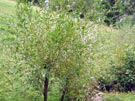 |
The willow (Salix caprea) In spring the willow-catkins provide the first food for the bees. We should remember this, when we cut off the willow branches to use them for Easter. As a good pollen producer the willows offer a good source of food for the bees so that they can produce many larvae. In this way the colony of bees can recover from hard winter times. Willow-branches are very elastic. The farmers use them to make baskets. Also the straw on the roof of the Plattnerhof has been fixed by means of willow-branches. |
| The apple "Lederer" In former times the Lederer-apple was cultivated, because the sweet tasting apples could be stored up until spring. The skin of the apples becomes very hard, like a kind of leather, therefore it is called Lederer. Today this type of apple is very rare. |
|
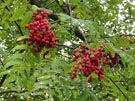 |
The rowan-berry (Sorbus aucuparia) In South-Tyrol spirits are distilled from the red berries - the so-called Mospeler, which used to be used by the farmers to help cure temperatures and colds. For one litre of spirits you need up to 80 kg of these berries, which are rich in vitamin C and minerals. |
| The dog-rose (Rosa corymbifera) This wild type of rose is well known for its fruits, from which the well-known tea is made. This type of rose is also mentioned in the German childrens' song "Ein Männlein steht im Walde". These roses are a major source of pollen for the bees. |
|
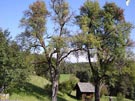 |
Other plant types There are many other types of plants to delight the visitor all around the Plattnerhof and, as we do not use fertilizer, the meadows are filled even today with the variety which in other places belongs to the past. |
